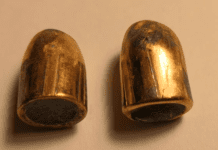This post is also available in:
 עברית (Hebrew)
עברית (Hebrew)
The discovery of a new material may be a promising route to lightweight armor, protective coatings, blast shields, and other impact-resistant materials. Researchers at MIT, Caltech, and ETH Zürich have fabricated “nanoarchitected” materials — materials designed from precisely patterned nanoscale structures. The nanometer-scale carbon struts give the material toughness and mechanical robustness.
According to reports by Phys.org, the team tested the material’s resilience by shooting it with microparticles at supersonic speeds, and found that the material, which is thinner than the width of a human hair, prevented the miniature projectiles from tearing through it. The researchers calculated that in comparison with steel, Kevlar, aluminum, and other impact-resistant materials of comparable weight, the new material is more efficient at absorbing impacts. If produced on a large scale, this and other nanoarchitected materials could potentially be designed as lighter, tougher alternatives to Kevlar and steel.
“The knowledge from this work… could provide design principles for ultra-lightweight impact resistant materials [for use in] efficient armor materials, protective coatings, and blast-resistant shields desirable in defense and space applications,” says co-author Julia R. Greer, a professor of materials science, mechanics, and medical engineering at Caltech, whose lab led the material’s fabrication.
A nanoarchitected material consists of patterned nanometer-scale structures that, depending on how they are arranged, can give materials unique properties such as exceptional lightness and resilience. But this potential has largely been untested.To test the material’s resilience to extreme deformation, the team performed microparticle impact experiments at MIT using laser-induced particle impact tests. The technique aims an ultrafast laser through a glass slide coated with a thin film of gold, which itself is coated with a layer of microparticles—in this case, 14-micron-wide silicon oxide particles. As the laser passes through the slide, it generates a plasma, or a rapid expansion of gas from the gold, which pushes the silicon oxide particles out in the direction of the laser. This causes the microparticles to rapidly accelerate toward the target.
Prepared to dive into the world of futuristic technology? Attend INNOTECH 2022, the international convention and exhibition for cyber, HLS and innovation at Expo, Tel Aviv, on November 2nd – 3rd
Interested in sponsoring / a display booth at the 2022 INNOTECH exhibition? Click here for details!


























